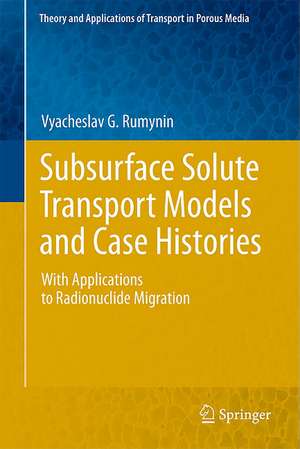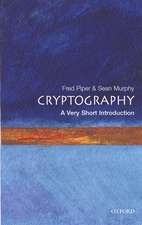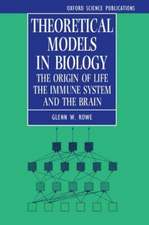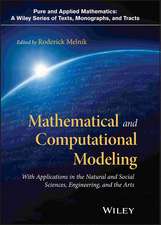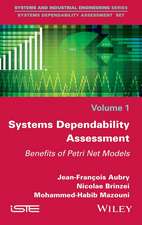Subsurface Solute Transport Models and Case Histories: With Applications to Radionuclide Migration: Theory and Applications of Transport in Porous Media, cartea 25
Autor Vyacheslav G. Rumyninen Limba Engleză Hardback – 21 iul 2011
The book gives many computational examples and case studies drawn from the conducted field investigations. The analyzed problems are as follows:
- investigation and prediction of groundwater contamination by industrial contaminants and solutions (radionuclides, chloride and nitrate brine) with special focus on the effect of (a) aquifer heterogeneity, anisotropy, and dual porosity, (b) density contrast existing between industrial waste and groundwater, or in density-stratified artesian and coastal groundwater systems; (c) physicochemical interactions that play a major role in retarding (e.g. adsorption) or enhancing (e.g. interactions between dissolved species and mobile colloids) contaminant transport;
- prediction of the effects of pumping on groundwater quality at wellfields;
- groundwater dating using stable and radioactive isotopes for prediction and assessment of contamination potential;
- field and laboratory tests’ design and analysis, and monitoring data interpretation;
- partitioning of surface and subsurface flows using isotope techniques.
Thus, the book, along with theoretical findings, contains field information, which will facilitate the understanding of subsurface solute transport and the development of a methodology for practical applications to groundwater hydrology.
| Toate formatele și edițiile | Preț | Express |
|---|---|---|
| Paperback (1) | 827.82 lei 38-44 zile | |
| SPRINGER NETHERLANDS – 23 aug 2016 | 827.82 lei 38-44 zile | |
| Hardback (1) | 976.72 lei 6-8 săpt. | |
| SPRINGER NETHERLANDS – 21 iul 2011 | 976.72 lei 6-8 săpt. |
Din seria Theory and Applications of Transport in Porous Media
- 18%
 Preț: 1126.84 lei
Preț: 1126.84 lei - 15%
 Preț: 543.20 lei
Preț: 543.20 lei - 15%
 Preț: 642.68 lei
Preț: 642.68 lei - 18%
 Preț: 959.98 lei
Preț: 959.98 lei - 15%
 Preț: 645.28 lei
Preț: 645.28 lei - 15%
 Preț: 641.53 lei
Preț: 641.53 lei - 18%
 Preț: 1111.22 lei
Preț: 1111.22 lei -
 Preț: 418.34 lei
Preț: 418.34 lei - 18%
 Preț: 958.07 lei
Preț: 958.07 lei - 18%
 Preț: 948.79 lei
Preț: 948.79 lei - 18%
 Preț: 949.42 lei
Preț: 949.42 lei - 15%
 Preț: 646.75 lei
Preț: 646.75 lei - 18%
 Preț: 954.77 lei
Preț: 954.77 lei - 24%
 Preț: 805.92 lei
Preț: 805.92 lei - 18%
 Preț: 962.35 lei
Preț: 962.35 lei - 18%
 Preț: 954.93 lei
Preț: 954.93 lei - 18%
 Preț: 930.00 lei
Preț: 930.00 lei -
 Preț: 376.30 lei
Preț: 376.30 lei - 15%
 Preț: 646.75 lei
Preț: 646.75 lei - 24%
 Preț: 1624.73 lei
Preț: 1624.73 lei - 18%
 Preț: 730.35 lei
Preț: 730.35 lei - 18%
 Preț: 1228.47 lei
Preț: 1228.47 lei - 23%
 Preț: 799.71 lei
Preț: 799.71 lei - 23%
 Preț: 652.84 lei
Preț: 652.84 lei - 18%
 Preț: 1835.70 lei
Preț: 1835.70 lei - 18%
 Preț: 955.56 lei
Preț: 955.56 lei - 18%
 Preț: 1388.99 lei
Preț: 1388.99 lei - 18%
 Preț: 956.33 lei
Preț: 956.33 lei
Preț: 976.72 lei
Preț vechi: 1191.12 lei
-18% Nou
Puncte Express: 1465
Preț estimativ în valută:
186.95€ • 196.41$ • 157.12£
186.95€ • 196.41$ • 157.12£
Carte tipărită la comandă
Livrare economică 12-26 martie
Preluare comenzi: 021 569.72.76
Specificații
ISBN-13: 9789400713055
ISBN-10: 9400713053
Pagini: 840
Ilustrații: XXI, 815 p.
Dimensiuni: 155 x 235 x 51 mm
Greutate: 1.34 kg
Ediția:2011
Editura: SPRINGER NETHERLANDS
Colecția Springer
Seria Theory and Applications of Transport in Porous Media
Locul publicării:Dordrecht, Netherlands
ISBN-10: 9400713053
Pagini: 840
Ilustrații: XXI, 815 p.
Dimensiuni: 155 x 235 x 51 mm
Greutate: 1.34 kg
Ediția:2011
Editura: SPRINGER NETHERLANDS
Colecția Springer
Seria Theory and Applications of Transport in Porous Media
Locul publicării:Dordrecht, Netherlands
Public țintă
ResearchCuprins
Preface. 1. Advection and dispersion in saturated porous and fractured media.- 2. Flow and solute transport in unsaturated porous media.- 3. One-dimensional solute transport models for regional flow systems under areal recharge condition. Hydrodynamic models for isotope data interpretation.- 4. Profile (two-dimensional in vertical cross-section) models for solute transport in regional flow systems.- 5. Models for assessment of interlayer mass transfer by diffusion and vertical convection in stratified systems.- 6. Mass-transport models for fractured-porous reservoirs.- 7. Simplified reservoir models for flow and solute balance in coupled surface-water/ groundwater systems.- 8. Models for well tracer test analysis and interpretation.- 9. Models for prediction of effects of pumping on ground water quality at well-fields.- 10. Dynamic equilibrium between two liquids of different density.- 11. Formation of movable interface between two liquids of different density.- 12. Brine migration studies by means of numerical modeling.- 13. Modeling investigations of ground water contamination by industrial and environmental brines.- 14. Fundamentals of adsorption interactions and overview of experimental data.- 15. Radionuclide ground water contamination study and adsorption parameters estimation at "Radon" radioactive waste disposal site, Sosnovyi Bor, Leningrad region, Russia.- 16. Complex approach to study of Cambrian and Vendian clay formations as media for isolation of the radioactive waste (North-West region of Russia).- 17. Experimental and model investigations of adsorption-desorption processes (in application to radionuclide migration at sites of their deep injection disposal and near-surface storage).- 18. Colloid systems and adsorption equilibrium in them.- 19. Investigation of radionuclide colloidal transport at radioactive waste disposal site of the Siberian Chemical Combine.- 20. Migration models of adsorption type.- 21. Migration of the radionuclides onto colloids in multi-component solutions.- Conclusions.- References.- Index
Recenzii
From the reviews:
“G. Vyacheslav Rumynin describes the theory of solute transport by groundwater, analytical models, and their solutions and includes case studies and some numerical modeling results. … The book covers many topics and is written clearly. … I, therefore, highly recommend this book to graduate students and researchers in hydrogeology, geochemistry, and applied mathematics interested in analytical models of subsurface solute transport. … author presents a successful mixture of theory, model applications, laboratory results, and case study description, which makes the book very interesting and valuable.” (Daniela Blessent, Mathematical Geosciences, Vol. 45, 2013)
“G. Vyacheslav Rumynin describes the theory of solute transport by groundwater, analytical models, and their solutions and includes case studies and some numerical modeling results. … The book covers many topics and is written clearly. … I, therefore, highly recommend this book to graduate students and researchers in hydrogeology, geochemistry, and applied mathematics interested in analytical models of subsurface solute transport. … author presents a successful mixture of theory, model applications, laboratory results, and case study description, which makes the book very interesting and valuable.” (Daniela Blessent, Mathematical Geosciences, Vol. 45, 2013)
Textul de pe ultima copertă
The book addresses the development of the basic knowledge of the subsurface solute transfer with a particular emphasis on field data collection and analysis coupled with modeling (analytical and numerical) tool application. The relevant theoretical developments are concerned mainly with the formulation and solution of deterministic mass-transport equations for a wide range of engineering issues in groundwater quality assessment and forecasting.
The book gives many computational examples and case studies drawn from the conducted field investigations. The analyzed problems are as follows:
– investigation and prediction of groundwater contamination by industrial contaminants and solutions (radionuclides, chloride and nitrate brine) with special focus on the effect of (a) aquifer heterogeneity, anisotropy, and dual porosity, (b) density contrast existing between industrial waste and groundwater, or in density-stratified artesian and coastal groundwater systems; (c) physicochemical interactions that play a major role in retarding (e.g., adsorption) or enhancing (e.g., interactions between dissolved species and mobile colloids) contaminant transport;
– prediction of the effects of pumping on groundwater quality at wellfields;
– groundwater dating using stable and radioactive isotopes for prediction and assessment of contamination potential;
– field and laboratory tests’ design and analysis, and monitoring data interpretation;
– partitioning of surface and subsurface flows using isotope techniques.
One of the most essential topics addressed in the book is the migration and fate of radionuclides. Model development is motivated by field data analysis from a number of radioactively contaminated sites in the Russian Federation: near-surface radioactive waste disposal sites and deep-well radioactive waste injection sites. They play a unique role in the advancement of knowledge of the subsurface behavior and fate ofmany hazardous radionuclides and can be considered as field-scale laboratories.
Thus, the book, along with theoretical findings, contains field information, which will facilitate the understanding of subsurface solute transport and the development of a methodology for practical applications to groundwater hydrology.
Audience: This book is aimed at scientistst in hydrology, geochemistry, applied mathematics and environmental sciences and engineers who are interested in studying groundwater migration processes. Students will also find this book of interest.
The book gives many computational examples and case studies drawn from the conducted field investigations. The analyzed problems are as follows:
– investigation and prediction of groundwater contamination by industrial contaminants and solutions (radionuclides, chloride and nitrate brine) with special focus on the effect of (a) aquifer heterogeneity, anisotropy, and dual porosity, (b) density contrast existing between industrial waste and groundwater, or in density-stratified artesian and coastal groundwater systems; (c) physicochemical interactions that play a major role in retarding (e.g., adsorption) or enhancing (e.g., interactions between dissolved species and mobile colloids) contaminant transport;
– prediction of the effects of pumping on groundwater quality at wellfields;
– groundwater dating using stable and radioactive isotopes for prediction and assessment of contamination potential;
– field and laboratory tests’ design and analysis, and monitoring data interpretation;
– partitioning of surface and subsurface flows using isotope techniques.
One of the most essential topics addressed in the book is the migration and fate of radionuclides. Model development is motivated by field data analysis from a number of radioactively contaminated sites in the Russian Federation: near-surface radioactive waste disposal sites and deep-well radioactive waste injection sites. They play a unique role in the advancement of knowledge of the subsurface behavior and fate ofmany hazardous radionuclides and can be considered as field-scale laboratories.
Thus, the book, along with theoretical findings, contains field information, which will facilitate the understanding of subsurface solute transport and the development of a methodology for practical applications to groundwater hydrology.
Audience: This book is aimed at scientistst in hydrology, geochemistry, applied mathematics and environmental sciences and engineers who are interested in studying groundwater migration processes. Students will also find this book of interest.
Caracteristici
Interdisciplinary approach to define and solve coupled problems in hydrogeology Availability of unique field data showing spatial variability of parameters and behavior of contaminant plumes Development of new solutions for analysis of contaminant transport processes Broad range of analyzed types of ground water contamination sources and hydrogeological conditions Includes supplementary material: sn.pub/extras
